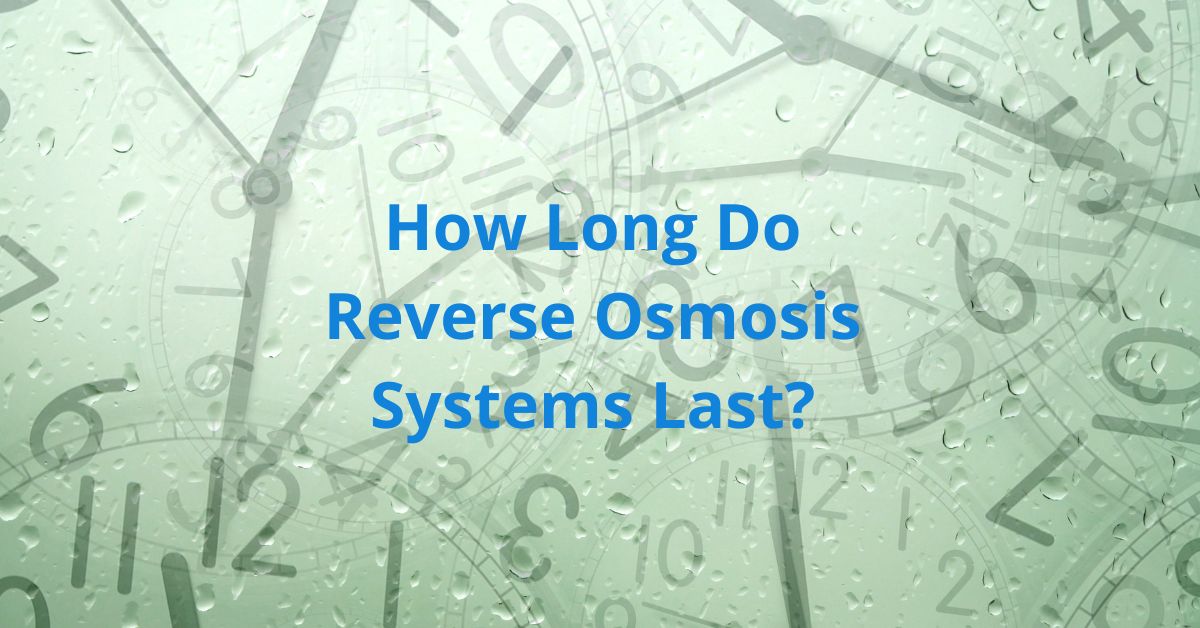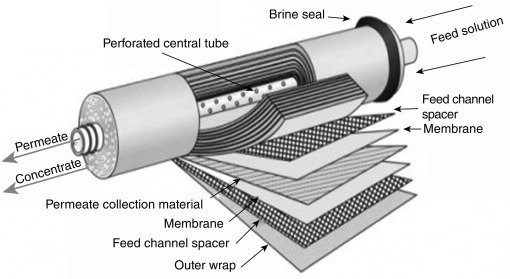As a water quality specialist and longtime user of various water filtration systems, I’m often asked about the lifespan of reverse osmosis (RO) systems. It’s an important question, and the answer depends on several factors. In this post, I’ll explain what influences the longevity of your RO system, whether it’s a an undersink RO system or a countertop reverse osmosis filter.
The Basics: What is a Reverse Osmosis System?
Let’s start with a brief overview of reverse osmosis. RO filtration is a process that uses a semi-permeable membrane to remove a wide range of contaminants from water, including chlorine, dissolved solids, bacteria, and even some emerging contaminants like PFAS (per- and polyfluoroalkyl substances). It’s one of the most effective PFAS water filters methods available for home use, which explains the increasing popularity of reverse osmosis systems for home use.
The Lifespan of Reverse Osmosis Systems
On average, a well-maintained reverse osmosis system can last anywhere from 10 to 15 years. However, this is a general estimate, and the actual lifespan can vary based on several factors:
*System Quality: Higher-quality systems tend to last longer and perform better over time.
*Water Quality: The quality of your source water plays a significant role. Water with high hardness or sediment can strain your system.
*Usage: The more water you filter, the more wear and tear on your system. A large family will likely need to replace parts more frequently than a single person.
*Maintenance: Regular maintenance is crucial for extending the life of your RO system. This includes changing filters and membranes as recommended.
*Type of System: Different types of systems may have different lifespans. For example, a countertop RO filter might have a different lifespan than an undersink water purifier.
Lifespan of Individual Components
While the overall system can last 10–15 years, individual components have shorter lifespans and need regular replacement.
*Pre-filters and Post-filters: These typically need to be replaced every 6–12 months.
*RO Membrane: The core component of your system; this usually lasts 3–6 years, depending on water quality and usage.
*Storage Tank: In undersink RO systems, the storage tank can last 10–15 years, but it may need to be replaced sooner if the air bladder fails.
*Faucet: A good-quality faucet can last as long as the system itself, but may need replacement after 5-7 years of heavy use.
*Tubes and Fittings: These components can last 10-15 years, but should be inspected regularly for signs of wear, leaks, or degradation, especially if exposed to sunlight or extreme temperatures. A leak stopper can provide an additional safeguard by automatically shutting off water flow if it detects a leak, potentially preventing water damage.
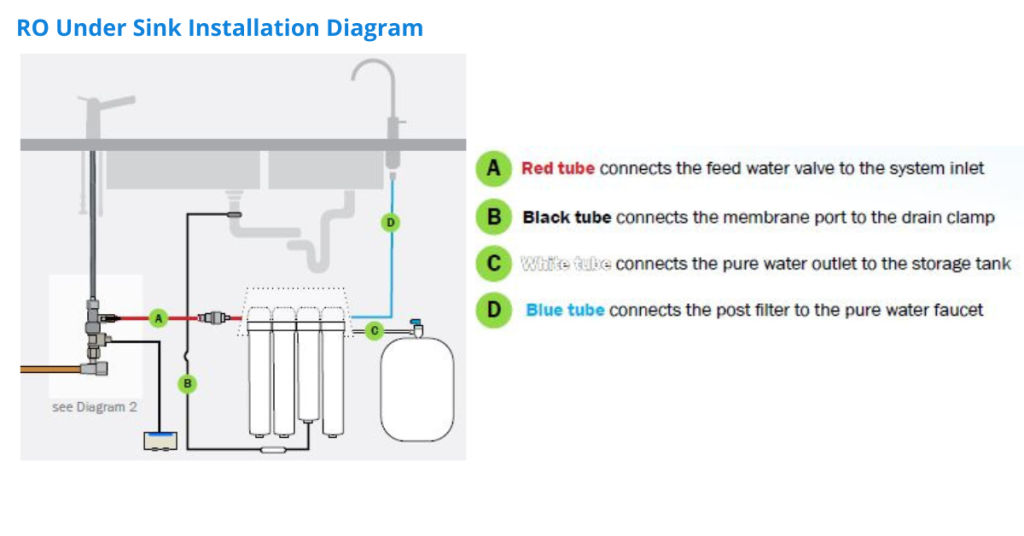
Different Systems, Different Lifespans
The type of system can affect its longevity. Here’s a look at some common types:
Undersink RO System: These are the most common and can last 10-15 years with proper maintenance. Installed out of sight, they can filter water for many years.
Countertop Reverse Osmosis Filter: These systems are more compact and may have a slightly shorter lifespan, typically 5–10 years. However, they’re easier to maintain and don’t require any plumbing modifications.
Undersink Reverse Osmosis Water Filter
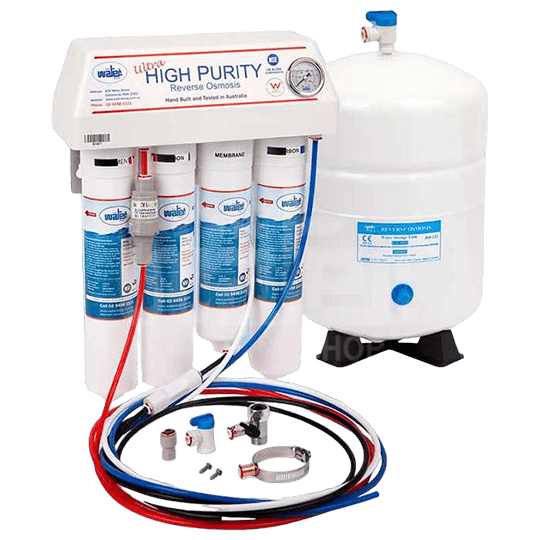
Benchtop Reverse Osmosis Water Filter
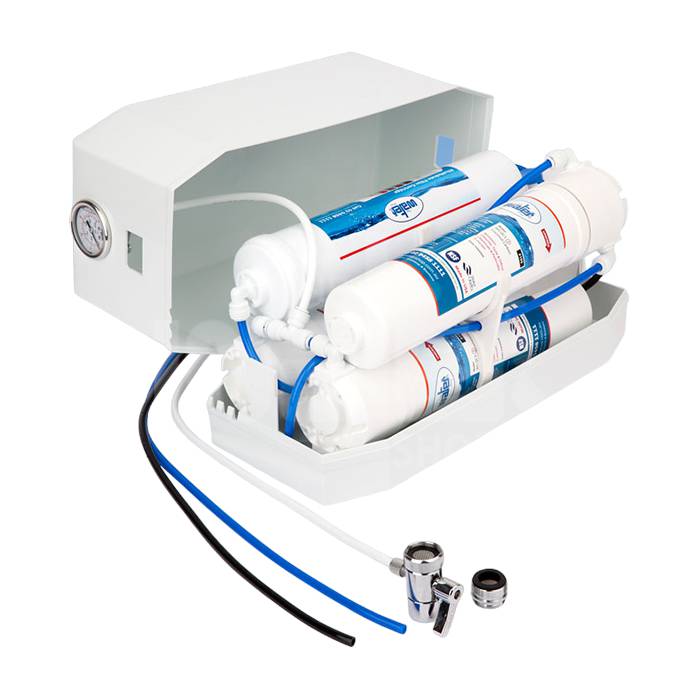
Maximising the Lifespan of Your RO System
To maximize your home reverse osmosis system, try these tips:
Regular Maintenance: This is the most important way to extend the life of your system. Set reminders for filter changes and perform annual check-ups.
Use Pre-filters: If your water is particularly hard or sediment-heavy, consider additional pre-filtration to reduce stress on your RO system.
Choose Quality: Invest in a high-quality system from a reputable manufacturer. It might cost more upfront, but it can save money and inconvenience in the long run.
Monitor Performance: Pay attention to your water quality and system performance. If you notice changes in taste, odour, or flow rate, it might be time for maintenance.
Professional Servicing: Consider having your system professionally serviced every few years, especially for undersink models.
When to Replace Your RO System
Even with the best care, there will come a time when replacement of your reverse osmosis system becomes necessary. It’s important to be aware of the signs indicating that your system may need to be replaced. If you notice a change in taste or odour in your water, even after replacing filters, this could be a clear indicator that it’s time for a new system. Age is another factor to consider; once your system reaches the 10-15 year mark, it’s wise to start thinking about a replacement as technology in water filtration is constantly evolving. Newer systems often offer improved efficiency or additional features that could make an upgrade worthwhile, providing you with even better water quality and potentially lower operating costs.
Ensuring Long-Lasting Clean Water for Your Home
With proper care and maintenance, you can expect 10-15 years of clean, fresh water from your RO filtration system. Whether you opt for an undersink RO system or a a countertop reverse osmosis filter, regular maintenance is key to maximising its lifespan.
Investing in a high-quality reverse osmosis system for your home is an investment in your and your family’s health. Clean water is essential for our wellbeing, and a well-maintained RO system can provide that for years to come.
If you have any questions about RO systems or their maintenance, feel free to ask. As water quality specialists, we’re here to help you make informed decisions about your water filtration needs.

